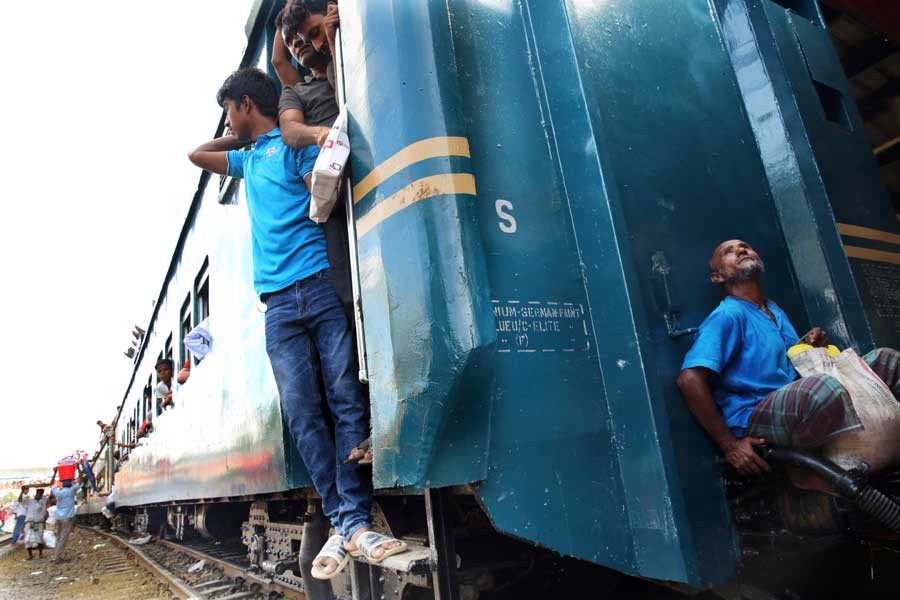
Published :
Updated :

When economy grows, it increases the movement of people and products or the vice versa. To facilitate the movement, an improved transport system is essential. Unfortunately, this is the area where Bangladesh still lags behind. Too much dependence on road and inadequate attention to railway makes the movement costly in terms of time, money, safety and environment.
For the regular commuters in Dhaka and adjoined areas, railway can provide a low-cost but safe transport service by introducing an adequate number of commuter trains. The number of those now in operation is insufficient. Some commuters are thus forced to board inter-city express trains causing trouble to long-destination passengers.
Everyday thousands of people have to shuttle between different parts of the capital city and nearby cities like Narayanganj and Gazipur. Most of them are dependent on intra-city and inter-city buses. The bus journey is costly and hazardous. Women, children and elderly people suffer the most. The service is poor while the fare is high.
Although commuters have long been demanding frequent commuter trains, the authority is indifferent. A vicious nexus of bus owners and workers in collusion with a section of corrupt administration effectively blocked the expansion of commuter trains' service.
A number of barriers are also there on way to expansion of commuters train service. Inadequate infrastructure is a major problem. In fact, a dedicated track is essential to make the commuter train service efficient. Increasing frequency of trains will not work without having dedicated or adequate tracks. Dhaka-Narayanganj train service is a good example. Though more than a dozen trains are now carrying thousands of passengers daily, the single track cannot take the pressure. A move to convert the single track to double track is yet to materialise.
Again, the double tracks of Kamlapur-Tongi-Joydevpur compel all the commuter, mail and express trains to operate in their sub-optimal level. Two big projects have already approved addition of triple and also quadruple tracks, but there lie some problems involving those. Both restoration and requisition of railway lands become costly and in some area almost impossible. Some parts of two flyovers also create a big obstacle to stretch out additional track.
The existing rail coaches are also not always fit for commuter service especially in rush hours. Generally every coach has four narrow doors. Coaches with more doors and fewer seats like Indian commuter trains may be helpful in overcoming the rush hour challenge.
Height of the platform is also another barrier not only for commuter train, but also for all other services. In Bangladesh, platforms in most of the rail stations are not properly adjusted with the stairs of the trains.
To facilitate commuter train, a number of flag stations are also needed where only commuter trains will halt for a few minutes. Moreover, feeder bus service in the different stations will make the service effective.
To give a big push to the overall rail system, the Bangladesh Railway undertook a 20-year (2011-30) master plan. But the plan has been revised to a 30-year (2016-2045) one. The revision proposed to invest Tk 6.24 trillion to drastically change and upgrade the whole rail transport in the country.
Under the master plan, a large number of projects have already been taken and more will be there. But the projects need to be perfectly aligned with the requirements of commuters and time. Commuter train service should get priority in order to reduce the heavy pressure on road traffic.


 For all latest news, follow The Financial Express Google News channel.
For all latest news, follow The Financial Express Google News channel.